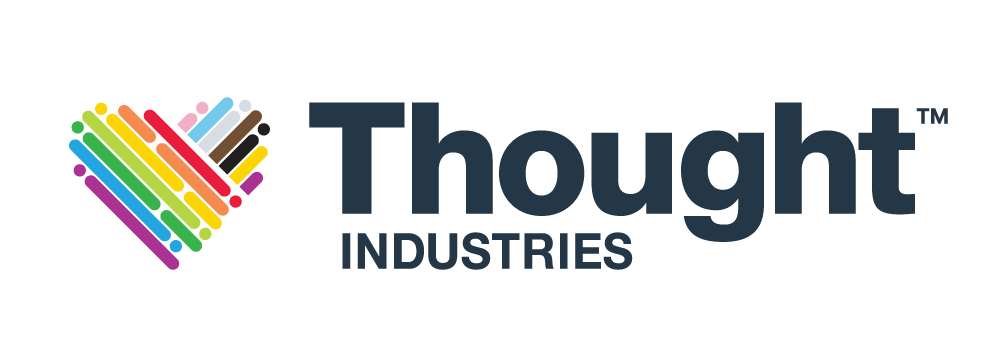To identify your best customers, start by thinking in terms of partnership — not just transactions. This means shifting from a vendor/customer mindset to one rooted in collaboration and shared goals. Your best customers are those whose vision aligns with yours, who drive initiatives forward, share market insights, and actively contribute to mutual success. When you analyze your customer base through this lens, you’ll often find these are the same segments that consistently realize the most value and drive the greatest revenue, retention, and expansion.
To understand who a good customer is, at Thought Industries we look at customer engagement holistically. For example, by identifying customer segments and using this data to drive activities in our Scaled Success team, we can increase Customer Lifetime Value (CLV), boost revenues, and improve profitability both internally and for our customer base.
Making this happen means getting the right data in place, in part because we want alignment across the organization. In addition to product analytics, support ticket volume is a good indicator of product usage, but we also look at community interaction, participation in office hours, webinars, roundtable discussions… there are so many elements that help us to understand how engaged a customer is, and how much they want to learn more and utilize the tool better. You need to grab this data early on and act upon it, and make it visible across all teams so that they can act upon it too, because this engagement can easily die down without your involvement in stoking that fire. When a customer puts in the effort, response rate is crucial, and you need to be ready to meet that and match it. This is the theory behind our Customer Health Score.
Building a Predictive Formula
To better understand customer health and build stronger partnerships, we developed a health score that helps us spot leading indicators and take a more proactive, predictive approach to engagement.
Over the past five years, we’ve been analyzing indicators of churn, and used that data to develop a curated health score built around key signals: consumption, adoption, engagement, experience, and risk. While we haven’t tracked everything consistently over that time, the trends allowed us to define Red, Yellow, and Green categories and create triggers our Scaled Success team can proactively act on.For example, if a customer has had zero communication over the past 30 days, whether that’s community, support or email communications — the Success team will receive an alert to take a look at the account and send a check in. If any unusual activity is logged, a similar alert will be sent to Success.
Using this health score, we’ve been able to move from a reactive approach to a much more proactive one. After all, once a customer reaches out with an issue, there’s already friction and discord there. If we can intervene earlier, and notice something before the customer has to tell us — we’re already two steps ahead.
Prioritizing Intervention by Potential Impact
To recognize where intervention is needed the most, and segment our customers accurately and effectively, we use customer tiers based on contract value, account size and growth potential. We also use renewal dates, recognizing that in the 6-12 months before a renewal, you can have a lot of impact with a customer. After that six month mark, you may have lost your chance.
We also track risk to customer health very strictly across the business, allowing any internal stakeholder to log indicators of customer risk–whether that’s something they saw in a community Slack channel, or a Support or Dev escalation with an alarming request. The customer’s health score will automatically adjust based on the level of risk, as well as how many risks have been logged. These continuous updates to customer health scores allow the Scaled Success team to focus on account changes from green to yellow, or from yellow to red.
Outside of Scaled Success, the health score benefits multiple departments across our company. Product teams can analyze product feedback using the same customer tier system and customer health data, which helps them prioritize feedback by risk levels, and use a common language when addressing customer concerns with Development teams and other stakeholders. For Sales, teams often work with Revenue Operations to identify accounts for prospecting that resemble our best, healthiest customers. The same is true from a Marketing perspective — by having a tool that everyone has access to, Marketing can say “We have a LinkedIn Live or a new Case Study coming up, let’s pick a green customer in the right vertical and use that to tell a story.”
Shifting to a Scaled Customer Success Model
Part of segmenting our customers into categories is about scaling success beyond the idea of one CSM to one customer, where the CSM is fighting fires and solving problems in real-time. There’s no denying that a 1:1 approach to customer success builds personal relationships. However, it can negatively impact consistency of information, and even duplicate effort when you take into account the need to train and enable every CSM, rather than get the customer to the right information at the right time. On top of that, the 1:1 approach can create departmental silos, where customer information and communication is managed by many CSMs working individually. These silos make it a lot harder to recognize your best customers, and to share that knowledge with the business to support strategic decision making.
For these reasons, we’ve moved to a one-to-many approach at Thought Industries when it comes to sharing product updates, upcoming events, or thought leadership content. We’ve transitioned all the information that the CSM team was sharing with their assigned accounts to our Customer Community and Academy, making it universally accessible and consistent to all customers. To make this shift from 1:1 to 1:Many work, our Scaled Success team needs to have a truly customer-centric attitude, understanding the behaviors of our customers, as well as the value that our platform can drive for them — which is far easier with the development of our customer health model. By recognizing attributes of best customers, our Scaled Success team can help other customers in similar cohorts to find or engage with the right resources at the right time — whether that’s posting product feedback on Community, joining a relevant webinar, or reading a knowledgebase article.
We still use a 1:1 approach for elements like account management and strategic planning where we leverage data and direct assistance from cross-functional teams to prepare for and address customer needs.
As a result of these changes, escalated support tickets are significantly down year over year, as well as the volume of support tickets overall. By acting to understand and address customer needs proactively, we have become better partners in our customer’s success.
Another aspect of our scaled success model is proactive playbooks — automations that we use for segments of customers, enabling us to send notifications or reach out to the right customers efficiently and effectively. Let’s say a product release is coming out, and it’s specific to one particular feature. By identifying all the customers who use that feature, we can be intentional about sending communications about the updated release, at the same time as crafting a more generic release note to all users. Another example is if an executive or an admin user is no longer at a company, we can trigger a playbook that identifies who the new stakeholder is using LinkedIn, and then our Scaled Success team can reach out proactively and engage with them.
Embracing a Data-driven Approach
It’s now more important than ever to use data to truly understand customer health. While businesses have always aimed to identify their best customers, that’s often been based on gut feeling or personal relationships.
A more data-driven approach brings clarity, removes bias, and adds intention to every action. This leads to deeper personalization, stronger partnerships, and scalable success. And when you view your customer base through this lens, you’ll often find these are the very segments driving the highest value, revenue, retention, and growth.
Maggie McCarthy is the Vice President of Customer Strategy and Digital Success at Thought Industries, with over a decade of SaaS experience in Customer Success and Product Management. She focuses on scaling customer operations, improving time to value, and driving long-term growth through strategic, tech-enabled initiatives.




